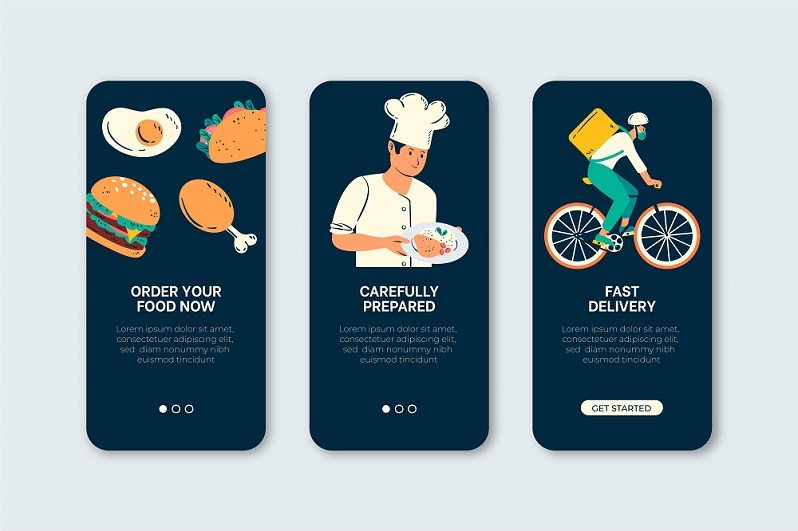 May 26, 2023
May 26, 2023

Recent years have seen an enormous spike in the prevalence of food delivery applications. Statista estimates that the global food delivery market will be worth 1.05 trillion USD by 2027, increasing from 1.02 trillion USD in 2023. The ease of delivery, the rising number of eateries that provide delivery, and the rising popularity of ordering online are some of the factors that have fueled this growth.
However, restaurants have also had significant difficulties due to the explosion of food delivery applications. While restaurants are partnering with these delivery apps, the delivery app fees for restaurants are one of the major concerns. These charges can reach as much as 30% of the total amount eating up the profitability and making it challenging for them to stand in the market.
Several factors influence the restaurant delivery app charges. These applications charge different fees based on the location, platform, and order quantity. These costs can be so costly in some situations that it makes it impossible for eateries to continue in business.
Let’s look deeper at the various types of charges that eateries may confront.
The most typical charge structure is this one. Restaurants pay delivery apps commission fees as a proportion of the whole order amount. The app’s services needed to streamline the distribution process, such as marketing, customer care, and technological infrastructure, are all covered by this cost. A typical commission charge ranges from 15% to 30%.
The service fee covers the expense of items like customer service, marketing, and technology levied by the delivery app. Usually, service charges range from 1 USD to 5 USD per order.
Several delivery apps often charge a supplementary delivery fee for logistical costs. This charge pays the delivery personnel and guarantees a quick and easy order delivery. Depending on the platform, the delivery charge may be either a set sum or a percentage of the entire order.
Some apps additionally charge extra fees on top of the above standard ones. These may include:
Orders below a predetermined minimum size are subject to this charge. It can fall between 1 USD to 5 USD.
These apps levy a peak hour fee during peak hours like the rush hour at lunch and supper. It usually ranges from 10% to 20% of the entire order amount.
This charge applies to orders placed through a third-party app, like Uber Eats. It usually represents a percentage of the whole order amount between 5% and 10%.
Certain delivery apps offer supplementary marketing and promotional services to assist restaurants in increasing their visibility and drawing in consumers. Featured listings, banner advertisements, and customized marketing campaigns are a few examples of these services. While these choices can increase a restaurant’s popularity, they often have a price.
When working with a delivery app, one of the primary challenges for restaurant owners is being aware of how costs are determined. Restaurants must evaluate variables including order volume, order value, distance, etc. when calculating the delivery app fees.
Let’s understand the procedure, as these costs can be a reason for concern and uncertainty for restaurants.
Food delivery apps charge restaurants a commission percentage on each order ranging from 15% to 30% of the order subtotal. Restaurants must be aware of this charge, which directly impacts their profitability.
Each order’s value is considered while calculating the fees. Lower-priced orders have lower prices, whereas higher-priced ones have higher costs. Hence, restaurants should focus on optimizing their average order value to maintain a competitive fee structure.
The distance between the eatery and the consumer’s residence also affects the fees. Delivery apps sometimes impose extra charges for longer distances to cover the expense of transportation and the delivery driver’s salary,
Let’s check out a summary of the fee factor and the impact.
| Factor | Impact on Fees |
| Commission percentage | Higher proportion results in higher fees, which reduces profitability. |
| Order Value | Higher order values can result in higher fees. |
| Delivery distance | Longer distances can increase transportation fees. |
Additionally, numerous apps that deliver food have minimum order fees. Regardless of the order total, restaurants are charged this flat fee for each order.

Restaurants must take a calculated approach when negotiating delivery app charges. It’s essential to offer a compelling case that outlines the shared advantages of a charge reduction or restructure.
Restaurants can try reducing the fees charged by the delivery apps by
Restaurants can raise their rates to offset the costs of delivery app charges. However, this can make customers less likely to order from the eatery.
Customers who place direct orders through a restaurant’s website or app may be eligible for discounts. Raising pricing for all clients can assist in offsetting the expense of delivery app fees.
Restaurants may bargain with the meal delivery app to lower costs. If the restaurant receives a lot of orders or is well-known, this could be more successful.
To avoid paying the fees imposed by food delivery apps, restaurants can launch their own delivery service. This approach may be more expensive, but it can offer the restaurant better control over the delivery procedure.
To offer delivery, restaurants could team up with a local delivery service. Though it would not provide them with the same amount of control, this might be a more economical choice than initiating their own delivery business.
Keeping the lines of communication open, comprehending the app’s objective, and dealing from a position of mutual benefit might raise the possibility of obtaining a lower delivery app charge.
Restaurants incur higher costs because of delivery app fees, but looking at the bigger picture is essential. In the age of doorstep delivery services, these applications offer restaurants a platform to reach a more extensive customer base. It’s crucial to perform a cost-benefit analysis to assess the effects of these fees. Here are a few things to consider.
Apps facilitating delivery can attract new consumers who might have yet to learn about the business. It’s common for the extra sales the app brings to exceed the costs.
Delivery applications simplify ordering and delivery procedures, lightening restaurant workers’ load. Improved customer service and higher ratings enhance the reputation and revenues of the restaurant can result from this increased productivity.
Delivery applications’ marketing and advertising capabilities can help eateries stand out in an increasingly competitive marketplace. These applications invest in targeted advertising and promotions, which may significantly improve a restaurant’s visibility.
The ease of utilizing delivery applications leads to habit formation for many clients. By making their menu available on digital platforms, businesses can boost customer retention and possibly convert app users into regular ones who will also go to the place in person.
While the delivery app fees for restaurants can first appear prohibitive, it’s essential to consider them, considering the advantages these apps provide. By 2025, it’s predicted that the Indian meal delivery market will have doubled, reaching a value of around 13 billion USD. The primary reason is that the Indian market is far less developed than in other nations, such as the USA.
It’s essential to enact legislation that establishes an upper limit on the commissions and fees that food delivery companies may impose on their business partners. This action will stabilize the sector and enable restaurant operators to reduce the price of their online menus while still making a profit.
